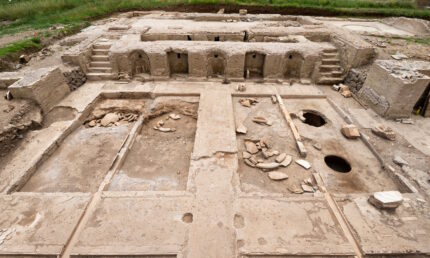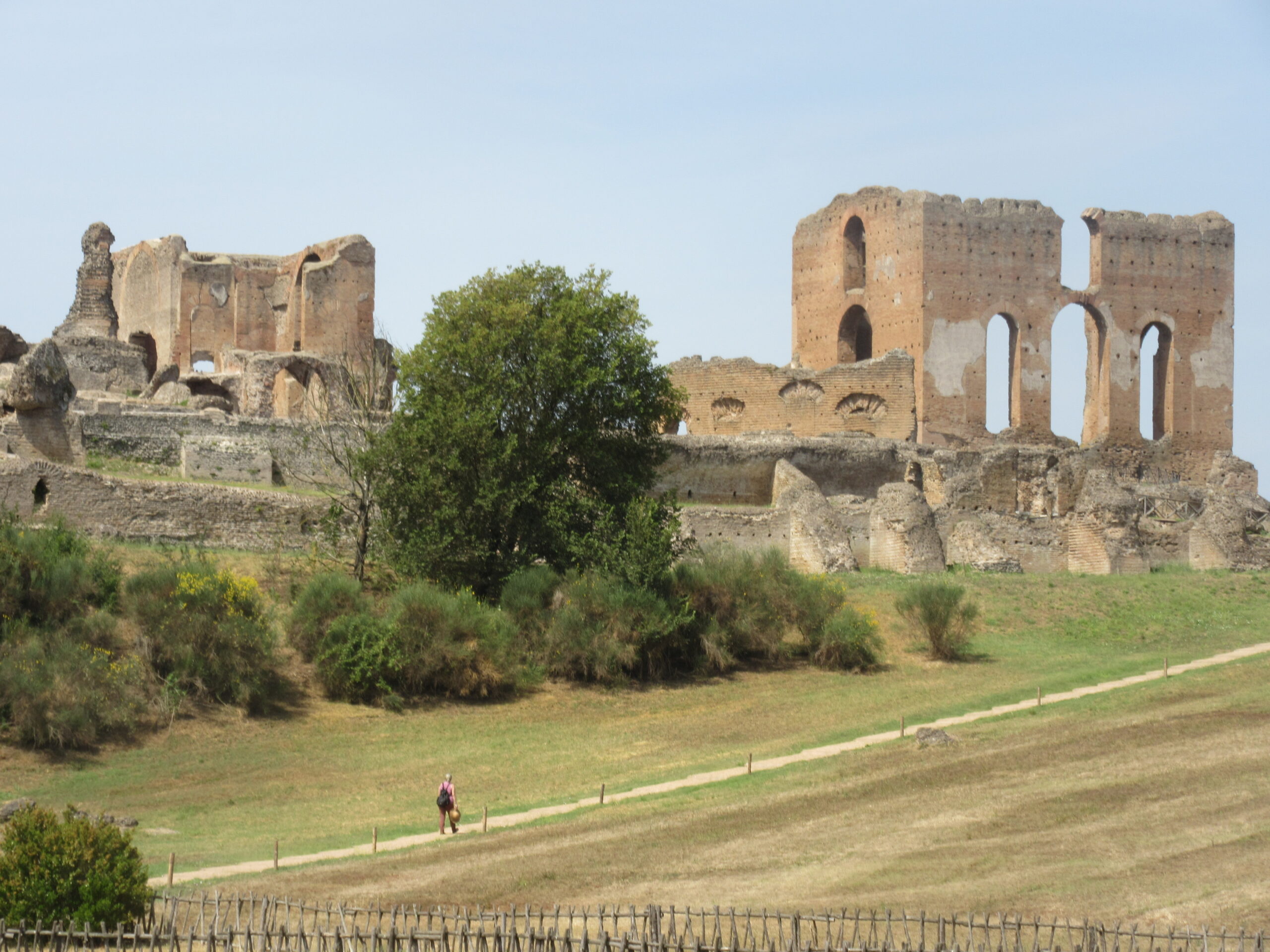A luxury winemaking complex from the reign of the emperor Gordian III (r. 238-244 A.D.) has been discovered at the monumental Villa of the Quintilii on the ancient Via Appia just south of Rome’s Aurelian wall. Its opulent materials, production scale, theatrical arrangement and storage capacity indicate it was an imperial winery where the emperor and his guests would get to witness the production of wine as a spectacle, perhaps even as a sacred rite.
The Villa of the Quintilii is a villa suburbana (country estate) built at the fifth milestone of the Via Appia. It was constructed on a massive scale, with stamps on the bricks dating the earliest monumental construction to 125 A.D. It had its own private aqueduct and three massive cisterns to supply the villa’s vast bathing facility (it’s seriously huge; the walls are stories high like you see in imperial public baths) and its agricultural production and processing concerns. It was so monumental, in fact, that the remains were dubbed “Roma Vecchia” (Old Rome) and believed to be an unknown ancient city.
The first remains of the Villa of the Quintilii came to light in the 15th century, but it was basically treated as a rich mine of ancient statuary for Pope Pius VI’s collection, not archaeologically explored. Actual excavations began in the early 19th century, and in 1828-9, a lead water pipe was discovered stamped with the name Quintilii. This identified the villa as having belonged to brothers Sextus Quintilius Condianus and Sextus Quintilius Valerius Maximus who were co-consuls of Rome in 151 A.D.
Its enormous dimensions, ultra deluxe appointments and custom infrastructure were so palatial the emperor Commodus (r. 177–192 A.D.) decided the Villa of the Quintilii should be his palace. He had the brothers killed in 182/183 A.D. specifically to confiscate their property. Commodus expanded the villa even further, adding a hippodrome and theater. The villa became the personal possession of emperors from Commodus through at least Gordian III (244 A.D.) It continued to be used as a residence until the 4th century, and even after it was abandoned as a dwelling, the site continued to be put to use (for agriculture, as a lime kiln, etc) through the Middle Ages.
The volcanic soil in the area is very fertile and as the Quintilius brothers are known to have written an agronomical treatise (now lost), their enormous property of at least 24 hectares was certainly used for agricultural purposes. What crops were grown and processed was unclear until excavations in 2017 and 2018 revealed the first remains of the winery over a demolished tower built during the reign of Commodus. Continuing excavation unearthed a large brick complex that had been demolished after the villa’s abandonment.
 The winery features a grape treading area, two presses, a vat for settling grape must and a channel connecting these processing areas to the wine cellar with sunken dolia (giant storage amphorae). These industrial structures are commonly found in winemaking facilities around the Roman Mediterranean, but this example is unique in its arrangement and luxurious decorative elements. A stamp in the mortar of a storage vat bears the name of the emperor Gordian, so he either built the winery himself or repaired/improved upon it.
The winery features a grape treading area, two presses, a vat for settling grape must and a channel connecting these processing areas to the wine cellar with sunken dolia (giant storage amphorae). These industrial structures are commonly found in winemaking facilities around the Roman Mediterranean, but this example is unique in its arrangement and luxurious decorative elements. A stamp in the mortar of a storage vat bears the name of the emperor Gordian, so he either built the winery himself or repaired/improved upon it.
Luxury was clearly a high priority, higher than function. On stairs and floors where standard wineries would have used cocciopesto (concrete with potsherds aggregate), this one uses prized imported marbles. Marble looks great, but it is an extremely slippery surface to carry baskets of juicy grapes.
After being trodden, the crushed grapes were then taken to the two mechanical presses, 2 metres in diameter, that stood nearby. The resulting grape must was then sent into three fountains, which gushed out of semicircular niches set into a courtyard wall. There were in fact five fountains, with two outer spouts producing water.
The grape must, having cascaded out of the fountains, then flowed along open channels into vast ceramic dolia, or storage jars, set into the ground – a standard winemaking technique in ancient Rome, since they created a stable microenvironment in which fermentation would take place.
Covered dining rooms with wide, open entrances were set around three sides of this open courtyard area. [Archaeologist Dr Emlyn] Dodd’s hypothesis is that here the emperor would have feasted and enjoyed the full theatrical spectacle of wine production.
Only one of these dining rooms is excavated – Dodd would like to find funding to uncover them all – and its walls and floors were covered in multicoloured inlaid marble veneers in elaborate geometrical patterns.
The whole facility seems to have been designed with both the practical matter of wine production and the sheer theatre of it in mind.
The discovery of the winery has been published in the journal Antiquity and can be read in its entirety here.

Maybe, it is worth to point out that –under today’s circumstances in many US states– emperor Gordian III might have bought a “well regulated Militia”, but maybe not a “dolium” of wine, not even in a luxury winemaking Villa complex.
Why that is, you may ask? – Mainly, it is because, at the tender age of 19, he was killed either by the Persians near modern Fallujah, or, possibly with a little help from Philip, by the “(not so well) regulated Militia” from within 😯️